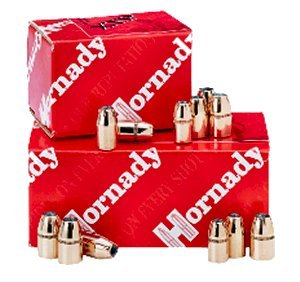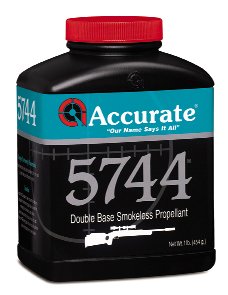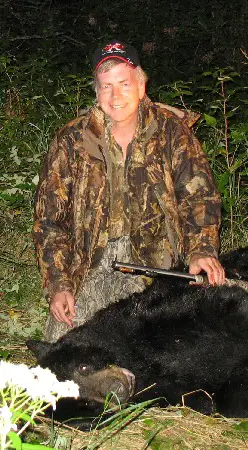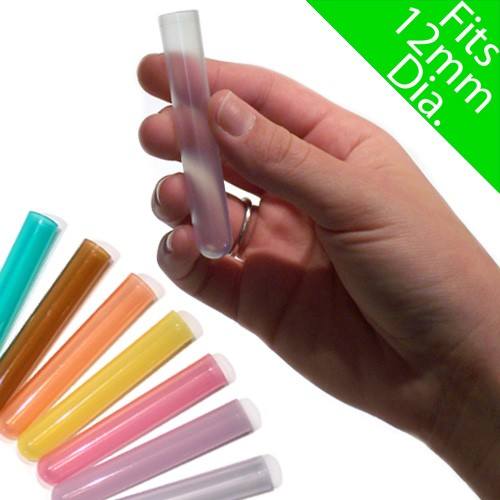


Savage 10ML Muzzleloading
2011 Savage 10ML-II .50 Caliber Muzzleloader
If someone had asked me if I'd been writing an article like this last November, I would have said “highly unlikely.” It was last November when Savage Arms decided that the muzzleloading numbers of the 10ML no longer justified its being in the catalog after a decade of production. As the word got out, the Savage 10ML-II became the most sought-after muzzleloader in the United States, with prices for used models more than doubling almost overnight.
The outcry was significant enough that Savage Arms listened, relented, and decided to do a last run accepting orders for just a couple of weeks in January, 2011. With essentially no advertising, the response was overwhelming . . . Savage sold more 10ML-II muzzleloaders in a few short weeks “by accident” than they had in the entire previous year “on purpose.” All of those orders placed in January have now been fulfilled, so the folks that didn't hesitate now have new Savage 10ML-II's to hunt with this year. Still, the demand was not satisfied, so Savage made the decision to continue with the 10ML-II on a made to order basis.
So, what's the problem? No problem, really, except that Savage Arms surprisingly has hit the limit of company production capacity, currently enjoying a 70% increase over 2010 which was already another record year for Savage Arms. As of the first week of June, 2011, Savage has been quoting a 21 week lead-time for new orders. According to Savage, they are now running three shifts, six days a week, so they have hit the wall of current capacity. It isn't like Savage Arms isn't aware of this and investing in themselves. Several new Okuma lathes have been put into service, at a rough cost of $250,000 per unit, among other things. Seventeen years ago, when Ron Coburn and his team took on the challenge of restoring the Savage name, it began humbly . . . with the production of one rifle, their long action centerfire bolt gun. The idea was simply to do it right and not do it any other way.
It has taken seventeen years, but now Savage is in the position of the largest rim-fire rifle company in the world, and the largest bolt-action rifle company in the world. Rather than just more of the same, Savage has innovated, with the Accu-Trigger, the Accu-Stock, and carefully applying modern manufacturing methods without compromising their standards of quality, safety, and accuracy. Savage Arms has been a “by the book” company, and it has paid big dividends from their F Class Word Championship rifles, to their industry-leading Accu-Trigger rimfires, to their incredibly successful 220 20 gauge slug gun and their Axis entry-level centerfires, originally designated the Edge. The Savage 10ML-II muzzleloader stands as a great example of Savage leadership and innovation, taking what many people hated about muzzleloading and building a muzzleloader to true Savage Arms centerfire standards of metallurgy, pre-production testing, and accuracy. It is the best-tested muzzleloader ever to be introduced, the only muzzleloader that exceeds all applicable SAAMI / ANSI centerfire standards, the only muzzleloader good enough to receive a Savage Arms proof-mark before it leaves the factory. As CEO Ron Coburn publishes, discussing the Savage Shooting Team Leader Stan Pate's championship rifle, “And just as Stan’s rifle bears the signatures of those who built it, so does yours. Each critical component of a Savage firearm carries a unique stamp that identifies the individual who deemed it worthy of the Savage name. These code-like stamps are often placed in obscure areas of your gun, but they tell the story of a sequence of events. More importantly, these marks proclaim a belief – that YOUR Savage is as reliable and accurate as any firearm made — at any price.”
Currently, the Savage 10ML-II remains in production in blued (4140 chrome-moly steel) composite versions only. I've been relentlessly asked if there are plans for stainless versions and laminated stock versions to rejoin the line and the answer is, “ I have no idea.” Savage Arms changes and evaluates their product line continuously, not just muzzleloaders, but their entire line. Based on market conditions, production capacity, and what consumers vote for with their shopping dollars, everything is subject to change all the time. That is what defines a responsive, consumer-oriented company. In my discussions with Savage V-P Brian Herrick, Ron Coburn, customer service guru Joe DeGrande, special order princess Effie Sullivan, order entry specialist Patty Mercik, production scheduler Chuck Pero, it is obvious that pleasing customers is what Savage is about, all of them. They aren't going to neglect the desires of their rimfire and centerfire customers, either. It is all a challenge, of course, but that's what keeps those folks young.
There are thousands of new 10ML-II enthusiasts in 2011 alone, so that's the reason for this article. In a generic question about stainless vs. blued in a muzzleloader, I'd often suggest stainless for corrosive propellants. With the Savage 10ML-II that isn't directly relevant, as you need not use expensive, messy blackpowder or blackpowder subs. When was the last time you saw a stainless steel shotgun in the goose pit? Also, if you want some smoke and volumetric measuring, we now have Western Powders “Blackhorn 209” that obsoletes previous blackpowder replacement propellants and is ideally suited for the 10ML-II.
I. WHAT CAN I SHOOT IN MY SAVAGE 10ML-II MUZZLELOADER?
Manufacturer's recommendations begin and end with what is printed in the Savage owner's manual, it is just that simple. No one is qualified to give manufacturer's recommendations except for the manufacturer. Ignore what Savage includes as recommendations and directions for use, you're on your own.
What this means, according to Savage Arms, is that you may use 250 – 300 grain saboted projectiles with the specific propellants that Savage allows, with no addition materials between the propellant and the sabot. It is right in the owner's manual, so that's where it begins and ends. You don't play “run with the scissors,” you don't lick the steakknife, and you don't ignore the owner's manual. Sure people do, including shooting ramrods out of their Savage 10ML-II's. When you muzzleload, you are a handloader and you accept the responsibility of using your muzzleloader in accordance with Manufacturer's recommendations. If you don't, it is called misuse and you have voided your warranty. It is all very straightforward.
For conicals or projectiles above 300 grains in weight, you have a lot of versatility. Blackhorn 209 is the propellant of choice and you can use any load authorized by Blackhorn 209 / Western Powders data. There is enough there for muskrat to moose, from groundhog to grizzly. You can hunt the Savage 10ML-II around the world (I have), and it is legal in all 50 states. It may not be legal where 209 primers are not allowed in dedicated muzzleloading seasons, but of course no 209-fired muzzleloader is, in those isolated cases.
II. WHAT IS THE BEST LOAD?
The best load is always what your individual rifle tells you that it is, just because a rifle loads from the muzzle doesn't change that. What is an ideal field load, based on my experience, is 40 – 44 grains Accurate 5744, the MMP Orange .458 / 50 sabot, and either the Hornady #4500 45-70 Hollow Point rifle bullet (above) or the Barnes Original #457010 Semi-Spitzer FB. The Hornady is an excellent deer-family game load, economical as well, while the Barnes is better aerodynamically, and the Barnes is what I've used for longer ranges (pronghorn) and for tougher animals ( black bear, as shown below). I use Federal 209A primers. There are many, many options, but this is the best starting point I know of. For many, it is all the performance you could want for the majority of hunting applications.
III. WHAT IS A VENT-LINER?
The Savage 10ML-II has a patented replaceable flash hole, or vent, which is a replaceable screw on the propellant side of the breechplug. It is designed to be replaced every 100 shots or every box or primers. You don't have to replace the breechplug as you would in other muzzleloaders: drilling out your breechplug to remove 209 primer crud and screwing in a fresh ventliner gives you perpetually new gun performance without replacing breechplugs.
IV. HOW DO A MAINTAIN A SAVAGE 10ML-II?
Same as a centerfire, use your favorite bore solvent (Hoppe's No. 9 or Montana X-Treme), followed by a couple of dry patches. If putting the gun up for a period of time, finish with Break-Free CLP.
To maintain the breechplug, remove the old ventliner, use an electric drill with a 5/32ths drill bit. Go in from the primer side, and drill all the way through the breechplug. That's it; you are now assured of an efficient flame path and positive ignition. Install a fresh ventliner, lightly lubed with Never-Seize (MIL-Spec 907E at your auto parts store), and your done. If you want a ventliner that is hardened, individually machined, and lasts for 500 shots or so, use a Randy Wakeman vent-liner.
V. WHAT ACCESSORIES MIGHT I CONSIDER?
A Spin-Jag jag (above) or Spin-Jag ramrod, powder vials (shown below, or use .308 brass with auto valve stem caps) for the field. If you want a range-rod, Montana X-Treme offers an outstanding one. Current Savage 10ML-II's no longer use a special breech plug tool, the breech plug has a 3/8 in. socket head. A quarter inch drive socket set is one of the most common household tools imagineable, so you no longer have to rely on a special tool or wrench. In times past, a few people have misplaced their breech plug tools naturally right before the season. No longer a potential issue, as a 3/8 in. socket set is available most anywhere, anytime.
VI. WHAT ABOUT BASES AND RINGS?
I use Warne Maxima QR steel rings and bases. If you like a one piece rail, use the EGW (Evolution Gun Works, shown below) Picatinny rail that allows you to mount shorter scopes, or any variety of red dot sights, and so forth.
Most of these areas are covered in more detail on this website, but that's the basics in conjunction with your Savage 10ML-II factory owners manual. Keep your sabots cool, a key component to getting the best accuracy. If the barrel is warm to the touch, it is too hot for best accuracy, for it is far hotter in the area where you seat your sabot.
Randy,
Here is a picture of my 9 year old son who shot his first deer during the Illinois youth season this past weekend (2010). He made a good clean kill with the Savage muzzleloader with the Hornady #4500 300 grain HP .458 bullet (w/mmp orange sabots) at 100 yards. This is the first animal shot with the muzzleloader and I was very impressed with the knockdown power it has even when loaded fairly light with 42 grains of 5744. Shane only weighs about 80 lbs and had absolutely no trouble shooting the gun accurately and handling the recoil. He has shot out to 200 yards prior to season with very good accuracy. -- Troy Biddle
The Savage 10ML-II is the cleanest, most hassle-free muzzleloader ever introduced by a major centerfire firearms manufacturer, provably the safest and best built. By using less propellant by weight, it has less recoil than other muzzleloaders making it ideal for shooters from nine to ninety. It is honestly built with great pride in Westfield, Massachusetts, USA, today, just as always. It shoots and performs like a Savage short action rifle, for that is its rich foundation and heritage.
LINKS:
MMP SABOTS: http://www.mmpsabots.com/
BARNES BULLETS: http://www.barnesbullets.com/
HORNADY BULLETS: http://www.hornady.com/bullets
SPINJAG: http://www.spinjag.com/
ACCURATE POWDER: http://www.accuratepowder.com/
BLACKHORN 209: http://www.blackhorn209.com/
MONTANA EXTREME: http://www.montanaxtreme.com/
WARNE BASES AND RINGS: http://www.warnescopemounts.com/home.html
EVOLUTION GUN WORKS BASES: http://www.egwguns.com/
RCBS SCALES: http://www.rcbs.com/
Contact: Randy Wakeman, 12362 S. Oxford Lane, Plainfield, IL 60585
Email: randymagic@aol.com
© Copyright 2003-2011 by Randy Wakeman. All Rights Reserved.



.jpg)





